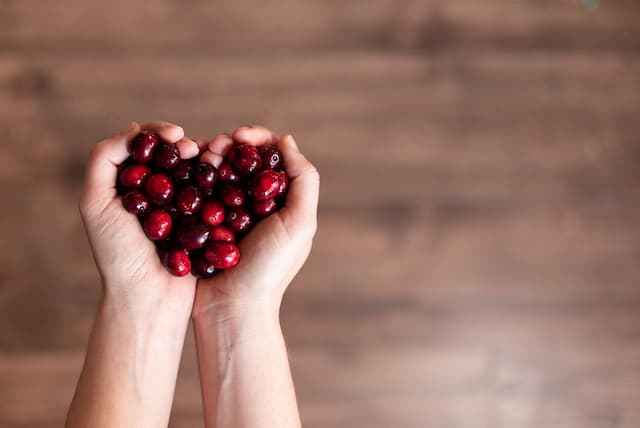The Privileged Life: America 1943 and 2020
“For our light affliction, which is but for a moment, is working for us a far more exceeding and eternal weight of glory, while we do not look at the things which are seen, but at the things which are not seen.” 2 Corinthians 4:17-18a
We’ve seen a lot of comparison between the coronavirus outbreak and the dreadful Spanish flu of 1918, a pandemic that killed as many as 50 million people or more worldwide. More than 45,000 American soldiers died from that particular virus, a higher number than were slain in the deadliest battle of World War I. Troops on both sides of the trenches suffered.
But I’m reminded of a different wartime era in American history: 1943. I wrote my undergraduate history thesis on advertising during World War II, reading every Saturday Evening Post from that year. It was a fascinating glimpse into public opinions and the opinion-makers of that time.*
1943 was a grim, pivotal year in that conflict. Things weren’t going well for the Allies on either the European or Pacific fronts. France—occupied. Italy—under the boot of Axis control. United Kingdom—besieged with bombs. South Pacific—controlled by Japan. Decency of life was suddenly bound up in captivity to cruelty.
Abroad, the Allies had visible adversaries, easier to fight than the ones who lurked in the shadows. Our soldiers—scattered around the globe on ships, submarines, airplanes, and tanks—focused their weapons on what they could see and identify.
Domestically, however, we were in a standstill mode, fighting invisible foes. The war seemed both far away and yet close to home at the same time. Loved ones had left the country, communication was no longer in person, and many felt powerless to do anything worthwhile. Except for frantic efforts to gear up manufacturing for battle-ready supplies, the entire pace of life was subdued.
Freedoms once taken for granted were now at risk. Anxiety simmered below the surface. The war was everywhere in the news, in conversations, in efforts to keep things going at home. Days were long for families with missing members…any moment could bring dreaded news of another loss of life. We were more than a year into this conflict with no hope in sight for an end anytime soon.
You can already see some of the similarities between the coronavirus crisis and this “trough year” of the war. Here are more:
- Budgets were tight, and many items were no longer available for purchase or were rationed. This was especially true for foods, nylon stockings, cars, appliances, and other consumer goods as factories converted to wartime production. People were asked to make sacrifices. The motto then? Use it up, wear it out, make it do, or do without. Today, we’re asked to avoid hoarding, to give generously to food banks, and sacrifice PPE for healthcare personnel.
- “Victory gardens” sprang up in backyards, encouraged as a way to let mass-produced foods go to armed forces personnel. I’m betting the seed section at Lowe’s has seen a lot of interest this past month…lots of gardens are getting planted because it’s something we can do at home during shutdown mode.
- People were gas-masked for air raid drills, to ready themselves for sheltering in the event of attacks on American soil. Homemade masks are a new fashion statement now, and we’ll see more and more of them in the coming months.
- All kinds of ads showed the home front folks doing their part for the war effort. “Rosie the Riveter” women worked in aircraft plants, baked cookies for soldiers, bought war bonds, nursed the wounded—getting praise as hometown “heroes,” like the healthcare workers cheered today from urban rooftops, “thank-you” signs, and car-honking parades.
- Even though consumerism had ground to a halt, companies still paid for advertising space to maintain customer awareness for post-war sales. One ad presented the “new Packard for ’43”—a series of war bonds pasted together in the shape of a car. United States Steel boasted a double production of gun barrels, showing a soldier aiming his weapon at directly at the reader. A tank charging over a hill, guns blazing, was labeled as a Cadillac. Does this remind you of the spam emails you’re getting from closed businesses?
- With non-essential train and airline travel cut back, Goodyear Aircraft urged Americans to work together to bring a swift victory. Thompson Aircraft Products reminded Americans of the Christian precepts of tolerance, love, pity, and mercy…things the Germans had ignored. One of the most famous ads of the war was “The Kid in Upper 4,” a call for New Haven Railroad passengers to sacrifice their comfortable berths so that soldiers could get a good night’s sleep before heading overseas. Consider the television ads you’re watching that promote kindness to comfort others and selflessness to prevent the spread of the virus.
With the coronavirus invasion of our lives, we’re caught in a Twilight Zone time warp with 1943…we’re on the same uncharted waters, fighting an unseen enemy with nothing more than masks, social distancing, and kindness.
But we have one weapon for victory that Americans have wielded in every war—prayer. Just as those on the home front prayed for our soldiers overseas and for the war to end, we are called now to pray without ceasing for our nation, our leaders, our healthcare providers, our research scientists, and our fellow citizens.
Pray for this pandemic to subside swiftly. Pray for people who are hurting from illness or loss of loved ones. Pray for God to give us the privilege of looking back on this trial as a time of spiritual renewal and healing.
As we link arms in prayer today, let’s remember how God answered the prayers of the 1943 faithful…perhaps not as quickly as they had wished but nonetheless with His victory and the preservation of freedom. May God bless us now as He did then.
Almighty Father, the One who hears and answers, please renew our faith and dedication to serving You. Teach us to live out Your precepts with Christ-like sacrifice and love for others. Please end this coronavirus pandemic and bring healing and medical remedies to the most vulnerable among us. Bless us with Your presence always. In Jesus’ name, Amen.
For another great World War II parallel, read about “Bundles for Britain” in this week’s post from friend Rebecca Henderson, https://asweservewithsignificance.com/?s=bundles … Rebecca is a talented writer, leader, and observer who writes on productive ways to offer community service, topics of national interest, and hometown stories. You might consider following her, too!




ADVERTISEMENT CREDITS:
“What has Rosie the Riveter to Do with Fresh Strawberries for Thanksgiving?”—https://digital.sciencehistory.org/works/bk128b060
“The Force the Germans Forgot” —https://postermuseum.com/products/saturday-evening-post-colliers
“The Kid in Upper 4”—https://blogs.lib.uconn.edu/archives/2019/09/12/the-kid-in-upper-4-a-wartime-advertising-campaign-of-the-new-haven-railroad/
#theprivilegedlife #lightbournecreative #thankful #privileged #gratitude #abundantlife #Christianprivilege #theprayerlife #quarantinelife #cabinfever #coronacrazy #neverendingshutdown #copingwithshutdown #copingwithcovid19 #coronavirus #prayforUSA #prayforhealing #stopthevirus #james1:2 #greatphysician #haltthevirus #prayerforcovid19 #blessedwithhealth #shutdownmadness #prayaboutpandemic #madisonavenue1943 #worldwariihomefront #saturdayeveningpost #warrelatedads #thekidinupper4 #rosietheriveter #victorygardens #spanishflupandemic #theyear1943
*This project launched my career as a writer…with my first job working as a copywriter at an ad agency.






